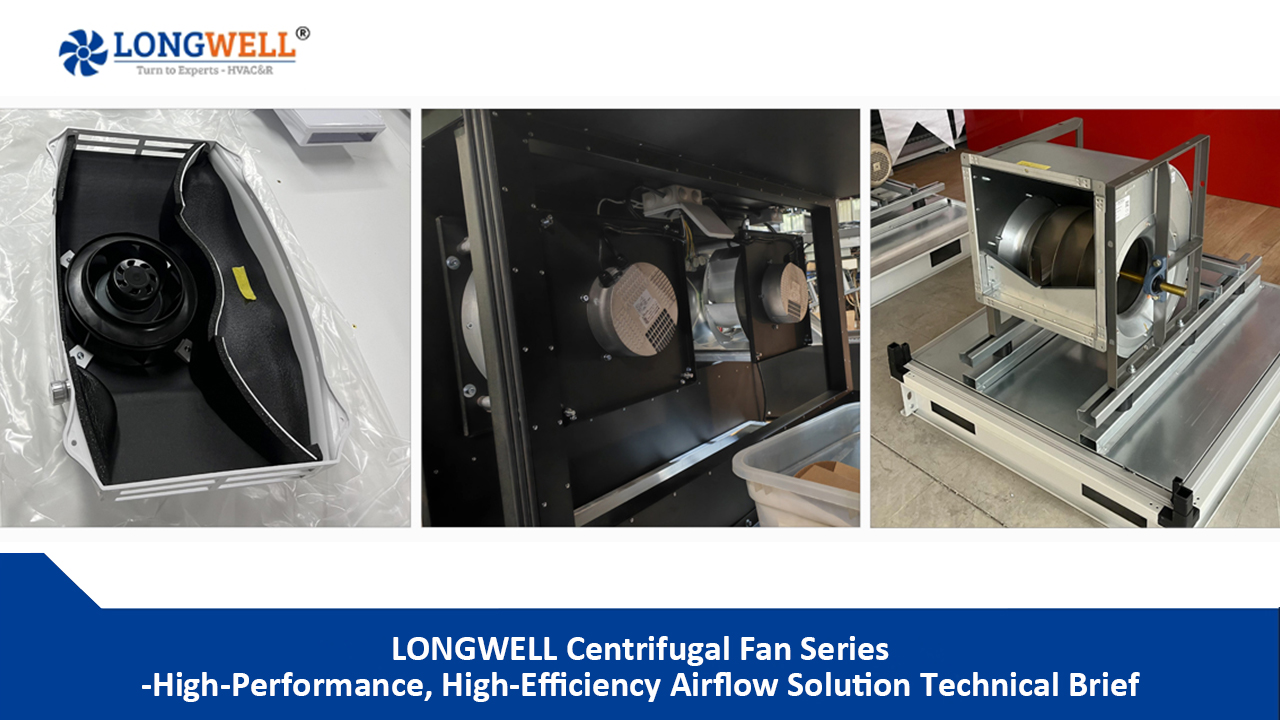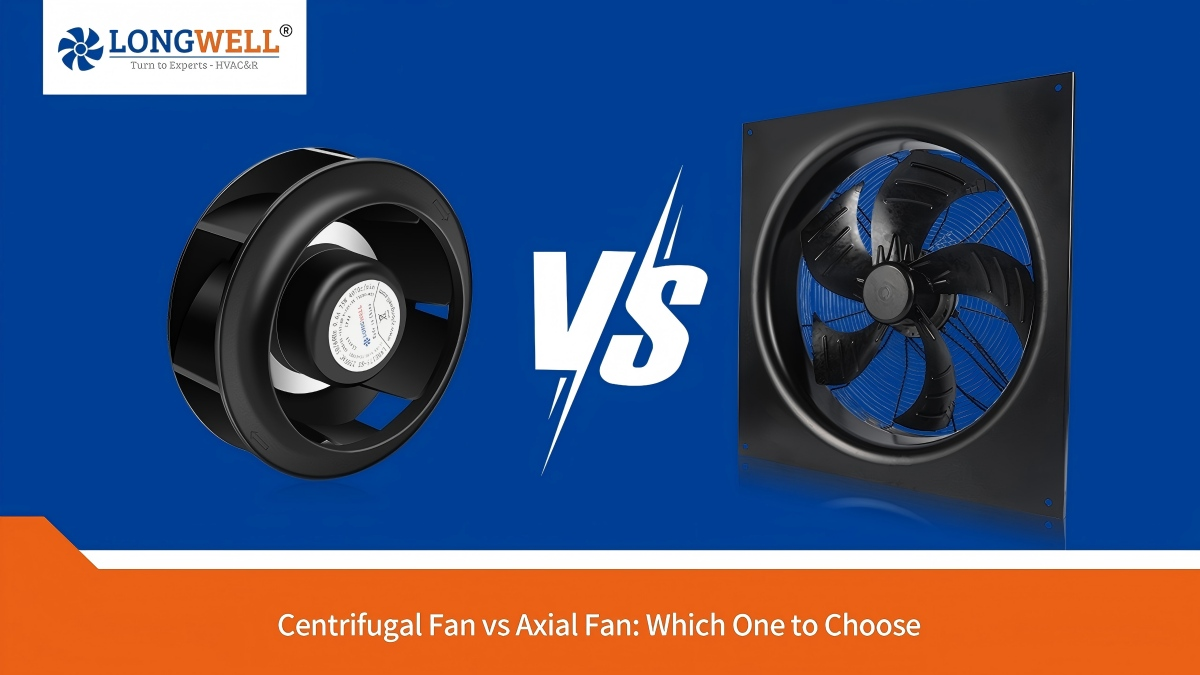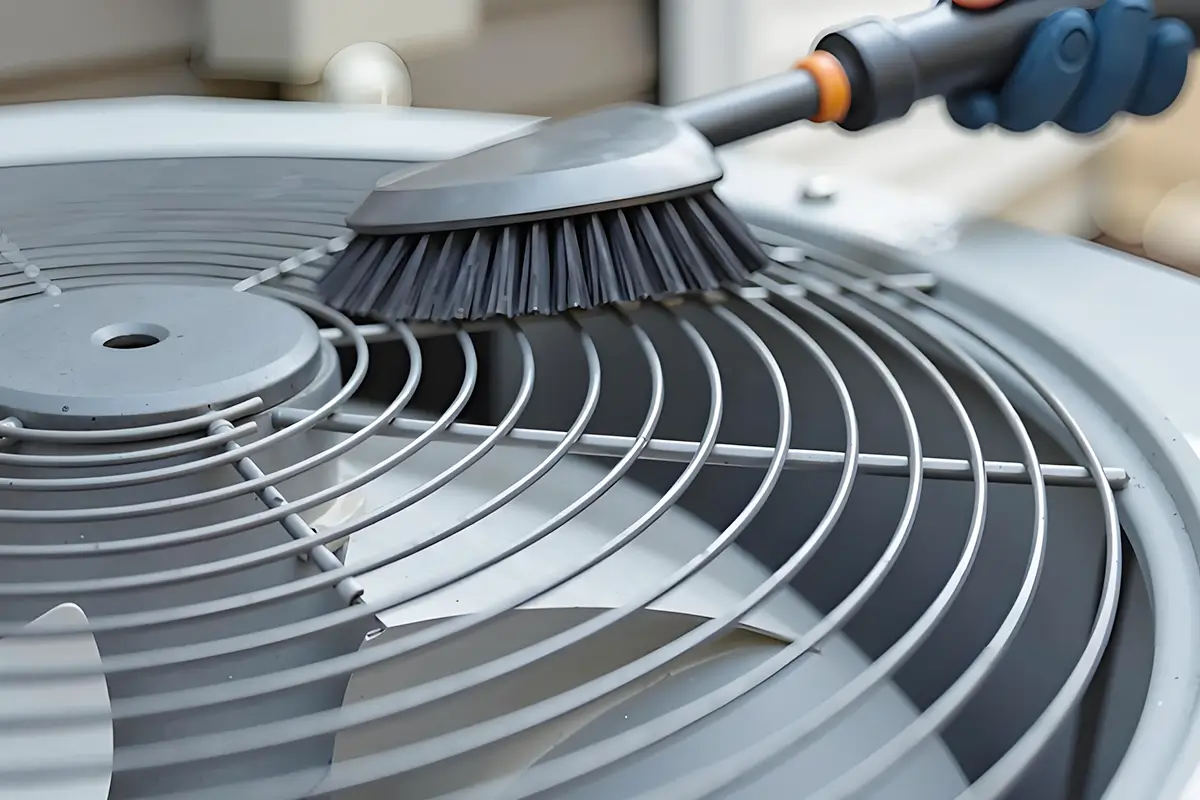
Introduction
Your kitchen exhaust fan is really helpful. It gets rid of grease, smoke, and odors while you cook. But over time, grease can build up on the fan blades, filter, and hood. This buildup can make the fan work less well and might even cause a fire. To keep your kitchen exhaust fan working properly, you should clean it often. This guide will teach you how to clean your kitchen exhaust fan. Doing this will make your cooking area cleaner and safer.
Essential Tools and Materials for Cleaning Your Kitchen Exhaust Fan
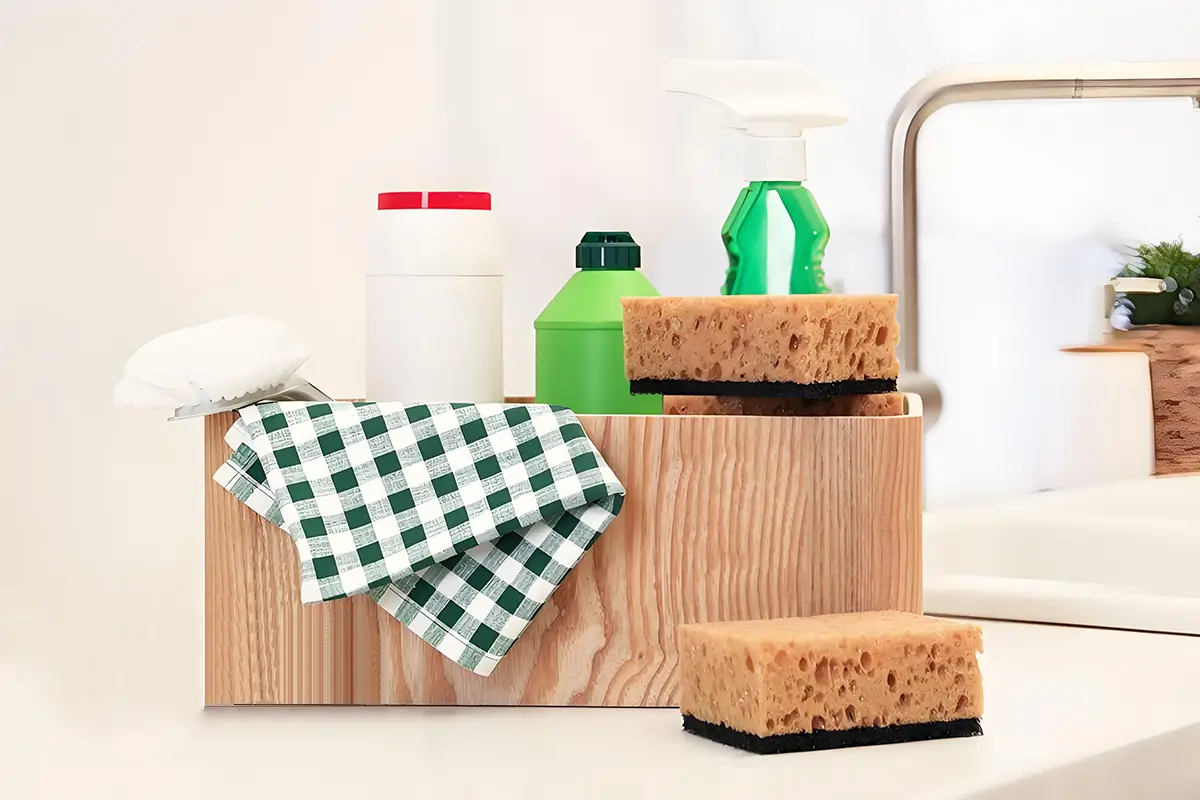
Before you start cleaning, collect all the tools and materials you will need. When you have everything prepared, the job will go smoothly and cleaning will be easier. Most of these items are probably already in your kitchen.
To clean the grease and grime well, you need:
List of Cleaning Supplies Needed
- Hot Water: Hot water helps to break down grease and dirt. This makes cleaning easier.
- Dish Soap: A few drops of dish soap combined with water make a good mix for removing grease.
- Baking Soda: Baking soda works as a gentle scrubber. It helps remove tough stains.
- A scrub brush is useful for tough spots.
- A vacuum cleaner can help clean up dirt.
- A mop is good for making floors shiny.
- A microfiber cloth is great at trapping dust.
- A steam cleaner can clean and sanitize surfaces.
- A carpet cleaner goes deep into rugs.
- Scrub Brush: A scrub brush with strong bristles works well for getting rid of tough grease.
- Clean Cloths: Having several clean cloths is useful for wiping, drying, and shining different surfaces.
Safety Gear Recommendations
- Wear gloves to keep your hands safe.
- Use a mask to prevent breathing in harmful fumes.
- Put on goggles to protect your eyes.
- Ensure there is good airflow in the area.
- Keep a first aid kit close by for emergencies.
- Gloves: Put on strong cleaning gloves to keep your hands safe from tough cleaning products and sharp edges.
- Eye Protection: It’s smart to wear eye protection when you clean the kitchen exhaust hood, as small bits might fall down.
By focusing on safety and getting the right supplies, you can be ready to handle the cleaning process properly.
Preparing Your Kitchen for the Clean-up
Proper preparation makes cleaning simpler and quicker. Before you begin scrubbing, take a moment to set up your kitchen. This will help stop the mess from spreading during the cleaning process.
First, place some old newspapers or towels under the exhaust fan. This will help catch any drips or spills. Now, let’s go to the next step.
Step 1: Switch Off Power to the Exhaust Fan
- Always put safety first when using your electrical appliances.
- Make sure the exhaust fan is turned off and unplugged.
- This keeps you safe and lowers the chance of electric shock while you clean.
- Before moving forward, check that the fan blades have completely stopped.
- If your exhaust fan is linked to a circuit breaker, turn it off for more safety.
- You might need to locate the right breaker for your fan; it’s usually in the electrical panel.
- With the power off, you can clean without worry and do a better job.
- Follow the next steps for cleaning your exhaust fan properly.
Step 2: Covering Surfaces and Appliances
A greasy exhaust fan can make a big mess when you clean it. It can spread grime onto your stovetop, counters, and nearby appliances. To protect these surfaces, cover them with old newspapers or a plastic sheet.
This easy step can help you prevent spills or splashes in your kitchen. You would not want to finish cleaning your exhaust fan and then discover more mess to clean.
By spending a little extra time to cover your surfaces, you can save time and effort later. When you protect your kitchen, you can start cleaning your exhaust fan.
Step-by-Step Guide to Clean Your Kitchen Exhaust Fan
Now that your kitchen is ready and you have everything you need, it’s time to clean. We will split the cleaning into simple steps. This way, you can focus on each part of your exhaust fan. If you follow these steps, your exhaust fan will be clean and nice in no time.
Let’s start by cleaning the filter. This part usually has the most grease.
Step 1: Removing and Cleaning the Filter
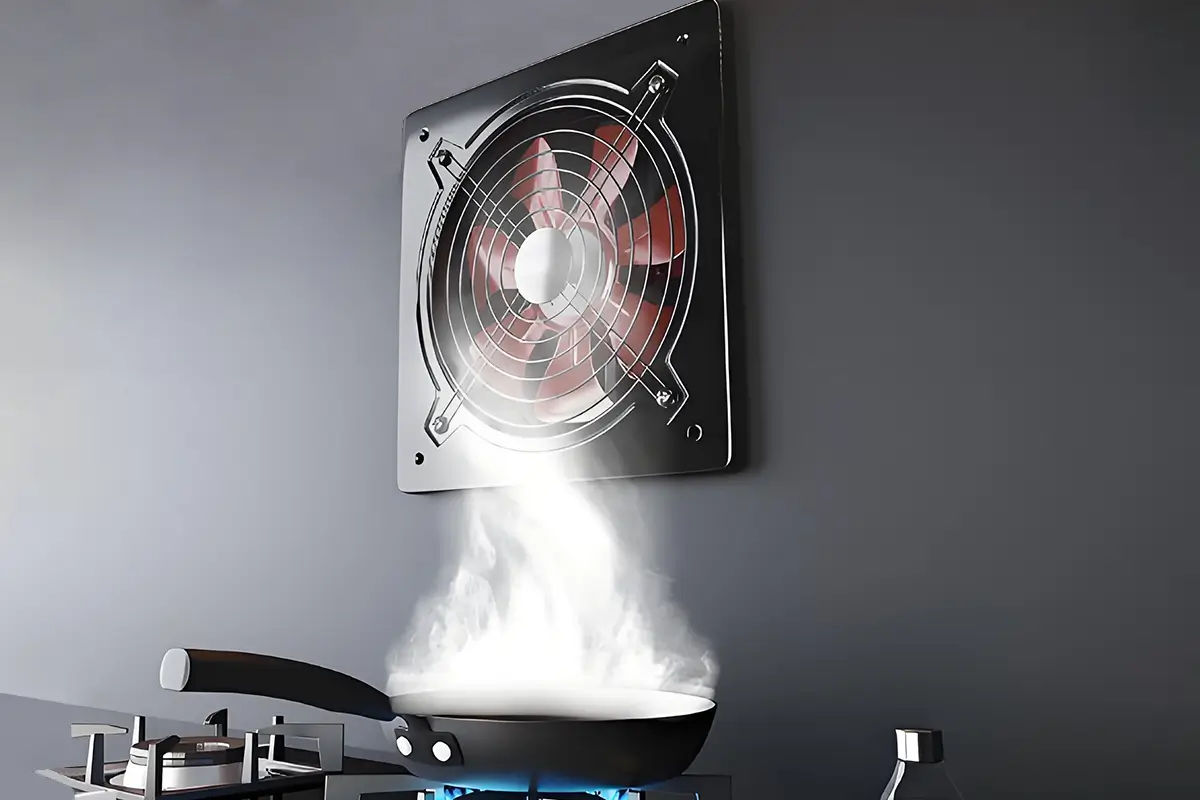
The filter is important to keep grease and dirt away. First, you need to take off the filter hood or the range hood filter from the exhaust fan unit. How you do this will depend on the brand and model of the fan.
You may need to take off clips, unhook springs, or slide the filter out of its place. If you don’t know how to do this for your model, check your user manual.
Next, fill a sink or basin with hot water. Add some degreaser or dish soap to the water. Then, put the filter into the soapy water. Make sure it is fully covered. Let it soak for at least 30 minutes. This will help to break down the grease that has built up.
Step 2: Cleaning the Fan Blades and Interior
While the filter is soaking, pay attention to the fan blades and the inside of the hood. Take a sponge or cloth and dip it in warm soapy water. Carefully clean each fan blade to get rid of any grease. If there is hard grease, let the soapy water stay for a few minutes before wiping it off.
Next, clean the underside of the hood. Grease and grime can build up there. Use the same method to wipe the top surface of the hood. Make sure to get rid of all the grease. Rinse your sponge or cloth in clean water now and then. This will help prevent spreading grease around.
After you clean the inside, use a clean microfiber cloth to dry all the surfaces thoroughly. It is important to remove all moisture. If moisture stays, it can attract dust and affect the fan’s performance later.
Conclusion
In conclusion, keeping your kitchen exhaust fan clean is very important. A clean exhaust fan helps make your cooking area healthy and safe. If you use the right tools and follow the steps in the guide, you can ensure your exhaust fan works well. Cleaning it often improves air quality and cuts down the risk of fires. Remember to schedule regular maintenance to keep your kitchen exhaust system in good condition. If you need more help or want expert cleaning services, contact us for advice and support. Happy cleaning!
Frequently Asked Questions
How often should I clean my kitchen exhaust fan?
It is a good idea to clean the filter of your kitchen exhaust fan every month. This practice helps prevent grease and dirt from building up. Additionally, you should clean the entire fan, including the fan blades, every three to six months. The frequency of cleaning depends on how much you use it. Regular cleaning keeps your exhaust fan working well and can make it last longer.
Can I use natural cleaners for my exhaust fan?
Natural cleaners are good for cleaning your exhaust fan. You can use baking soda and vinegar. To clean, make a paste with baking soda and water. You can also mix vinegar with water to wipe down the surfaces.
What are the signs that my exhaust fan needs cleaning?
If you see grease on the filter or fan blades, feel Reduced airflow, or smell cooking odors, it is time to clean your exhaust fan. If you ignore these signs, it can lower efficiency and increase fire risks.
Is it necessary to hire a professional for exhaust fan cleaning?
You can clean your home regularly. However, it might be better to hire a pro for a deep cleaning. This is important for the ductwork. Professionals have the right skills and tools to clean those hard-to-reach spots effectively.
Tips for maintaining a clean kitchen exhaust fan between deep cleans
To keep your kitchen exhaust fan clean every day, wipe its outside with a damp cloth after you cook. For a deeper clean, make a paste using baking soda. You can also use a thin layer of liquid dishwasher soap on a sponge. This will help get rid of any grease that has built up.

